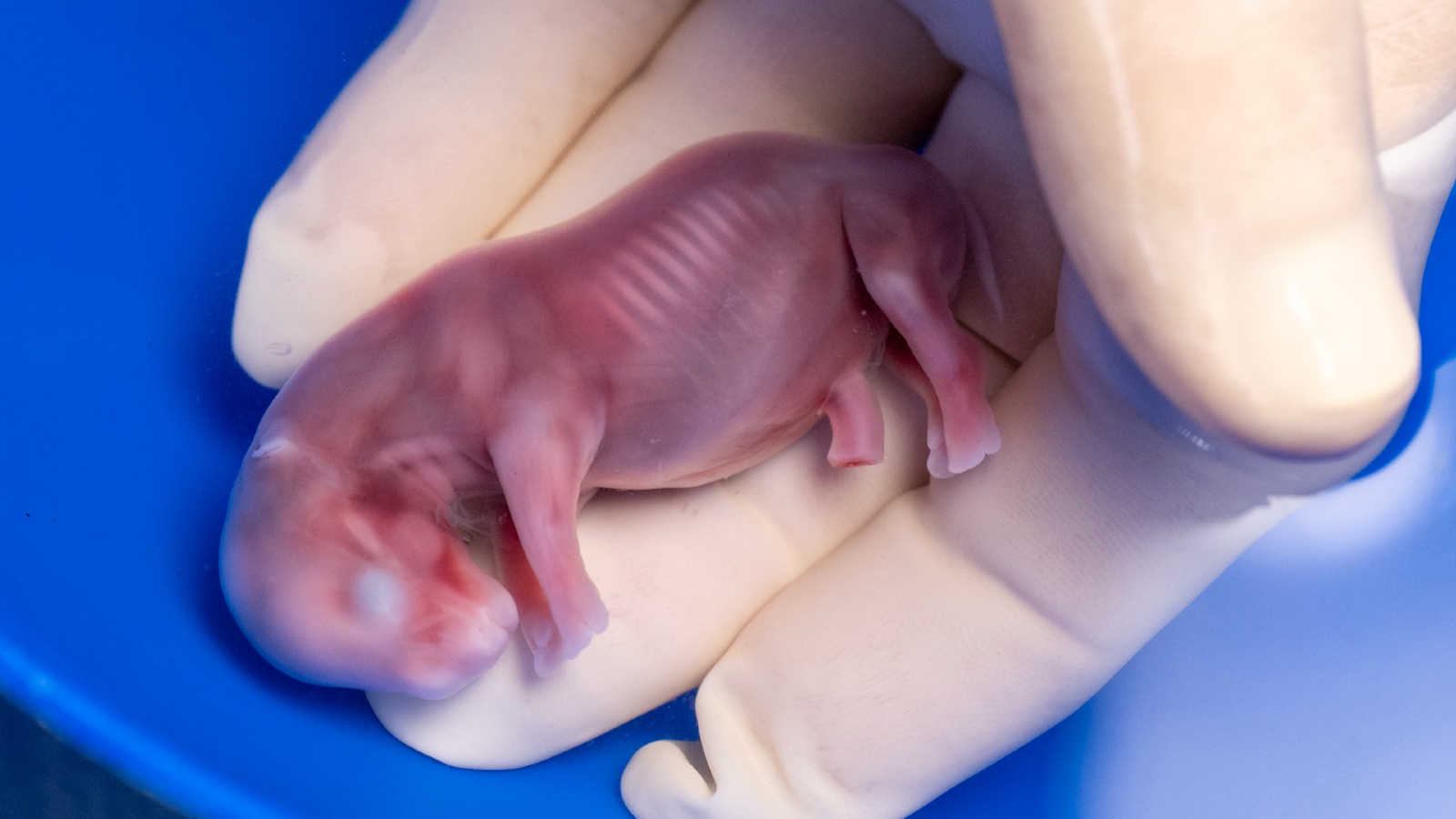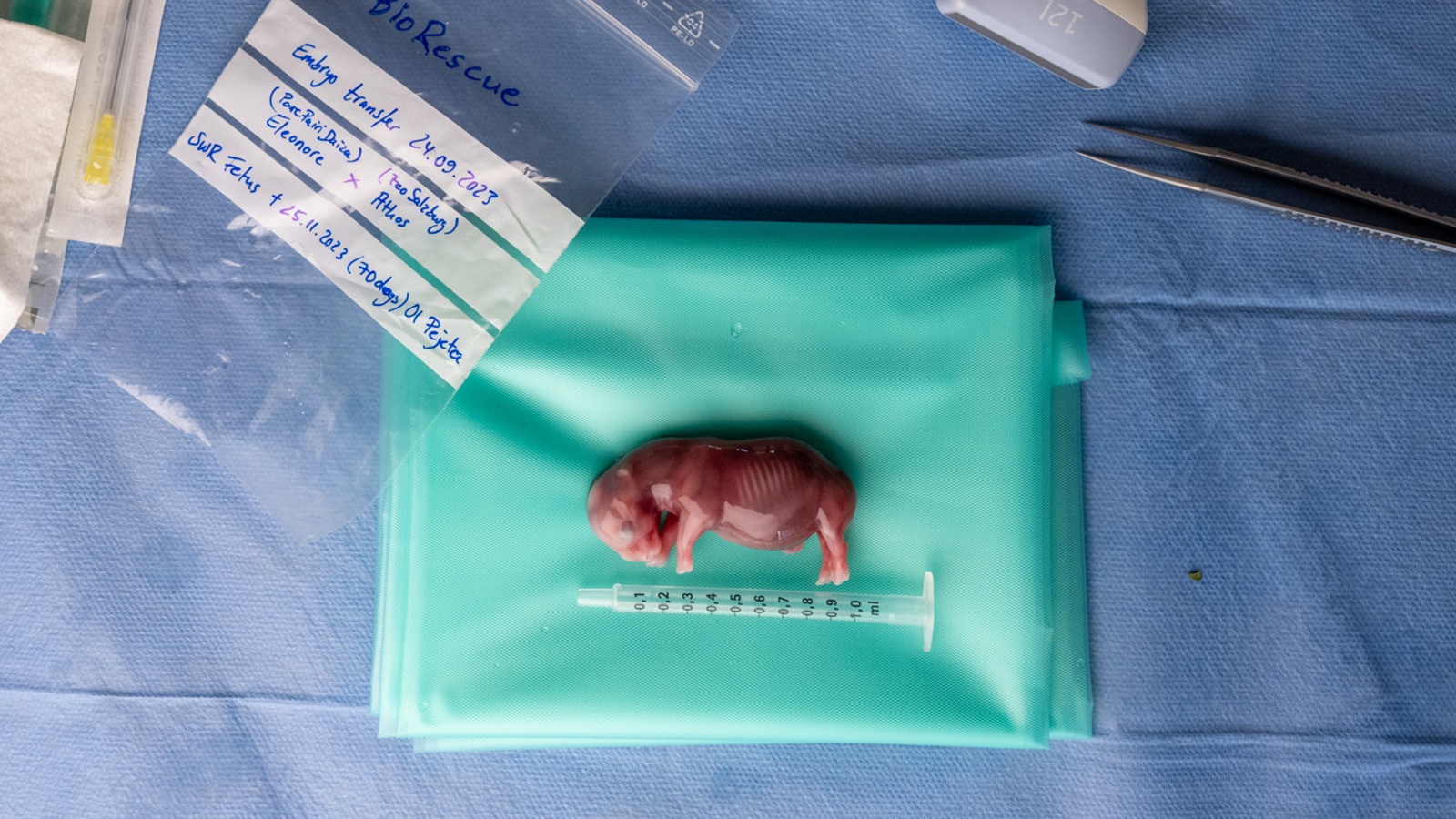1st-ever white rhino IVF sparks hope that ‘doomed species’ could still be saved, despite there being no males left

For the first time, researchers have successfully used a form of in-vitro fertilization (IVF) to impregnate a female white rhinoceros. This breakthrough means there is a slim chance the “doomed” northern white rhino could still be saved, despite there being no known males left alive. Other critically endangered rhino species could also benefit.
The scientists used an embryo transfer technique that’s very similar to IVF used in humans. The technique involves scientists taking the gametes, or sex cells, from a male and female rhino and combining them artificially to create an embryo — a fertilized egg that has started developing. The embryo is then transplanted into a surrogate female and, if everything goes to plan, she will become pregnant and give birth.
The transfer usually takes place after the mother-to-be has mated with a barren male so that both parents will think the offspring is their own and raise it after it is born. The same technique has been used in dogs and as part of the process to clone horses and create a cloned wolf born to a beagle surrogate.
In 2019, the international consortium BioRescue began exploring the possibility of using this technique to save one of the world’s rarest subspecies — the northern white rhino (Ceratotherium simum cottoni). After the death of the species’ last known male “Sudan” in 2018, there are just two known females left on the planet — a mother and daughter pair named Najin and Fatu, who are both protected by armed guards at the Ol Pejeta Conservancy in Kenya.
Without any males left to father new offspring, northern white rhinos are “functionally extinct,” meaning it is only a matter of time before they are wiped out.
Related: Which animals could go extinct by 2050?
In September 2023, BioRescue scientists took their biggest step yet to prove the technique can work in white rhinos by implanting two embryos into a southern white rhino (Ceratotherium simum simum) — a closely related rhino subspecies that is also critically endangered. The embryos were created from the gametes, or sex cells, of captive southern white rhinos in Belgium and Austria and were implanted into a surrogate that also lives in Ol Pejeta Conservancy.
Now, scientists have revealed that the procedure led to a successful pregnancy. However, the team only discovered the pregnancy during a necropsy of the mother-to-be, Curra, who died from a bacterial infection in November 2023. The infection was caused by flood water and was unrelated to the embryo transfer procedure.

Scientists retrieved the lifeless 70-day-old fetus from the dead rhino’s womb. The remains measured just 2.5 inches (6.4 centimeters) long.
Despite the rhino’s death, the BioRescue team is very optimistic about completing more embryo transfers in the future.
“We are overwhelmed that we now have proof that this technique works perfectly,” Thomas Hildebrandt, a reproductive biologist at the Leibniz Institute for Zoo and Wildlife Research in Germany and project leader at BioRescue, said in a statement. “It is bitter that this milestone is confirmed under such tragic circumstances… but I am certain that this proof-of-concept is a turn of the tide for the survival of the northern white rhino.”
If Curra had not died, the chances of a successful birth were around 95%, Cesare Galli, a veterinarian and CEO of Avantea Laboratories, which studied the fetus’ remains, said in the statement. Most complications with embryo transfers occur in the first 50 days, he added, so once they are past this point, pregnancies normally come to term.

The BioRescue team will attempt another southern white rhino embryo transfer later this year. But soon the scientists hope to try out the procedure on Najin and Fatu.
BioRescue has already created 30 viable northern white rhino embryos using frozen sperm collected from dead males and eggs from Fatu. Hildebrandt says that the first embryos will be transplanted into the living females within the next few years. However, The Guardian reported that this could happen as soon as May or June this year.
It is also hoped that embryo transfer could help increase the numbers of Sumatran rhinos (Dicerorhinus sumatrensis) in Malaysia, where the population also has no known males. There are around 40 of these rhinos left in the wild, according to the International Rhino Foundation.
Both Sumatran rhinos and northern white rhinos have been driven to the brink of extinction by hunters who kill the animals for their valuable horns.
However, the researchers warn that even if more northern white rhinos are created in the future, the species will remain at risk because there will not be enough genetic variation to create a self-sustaining population.





